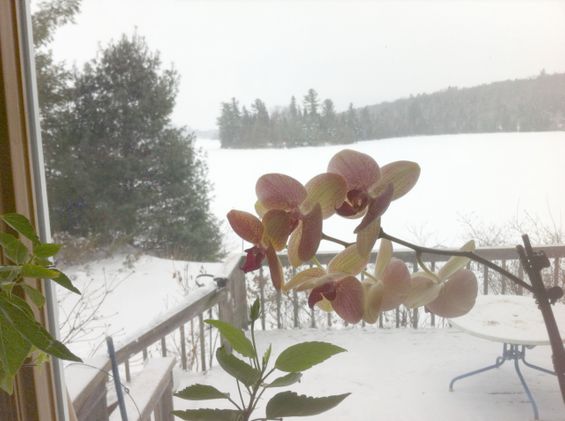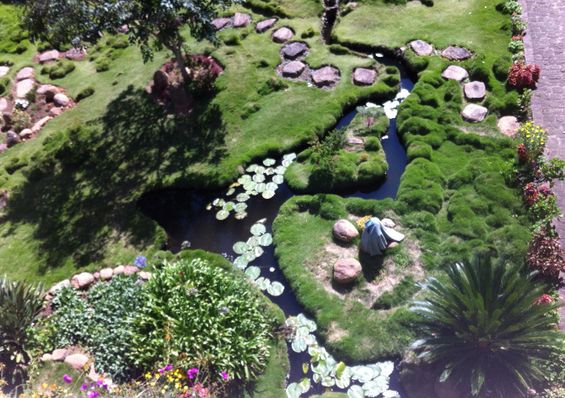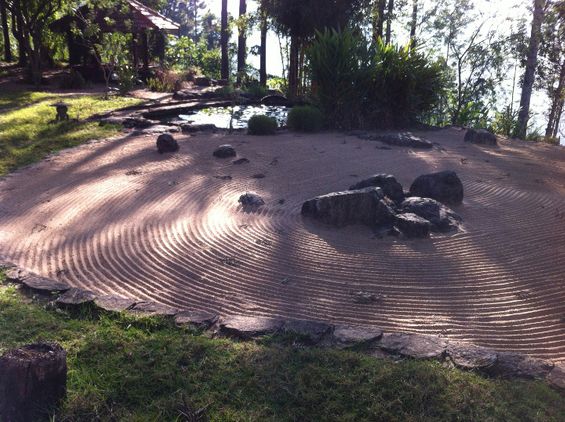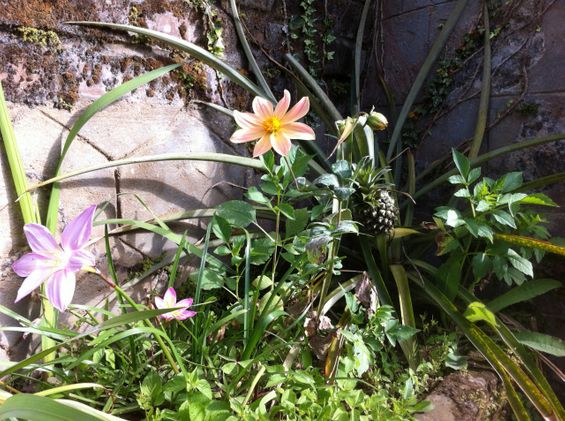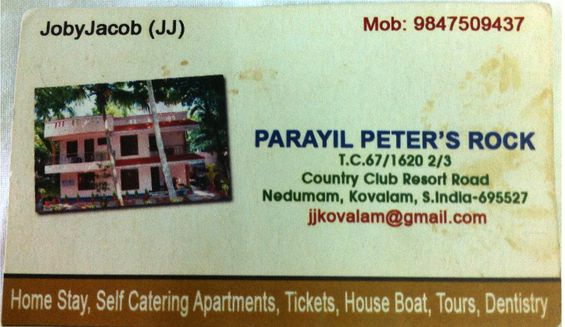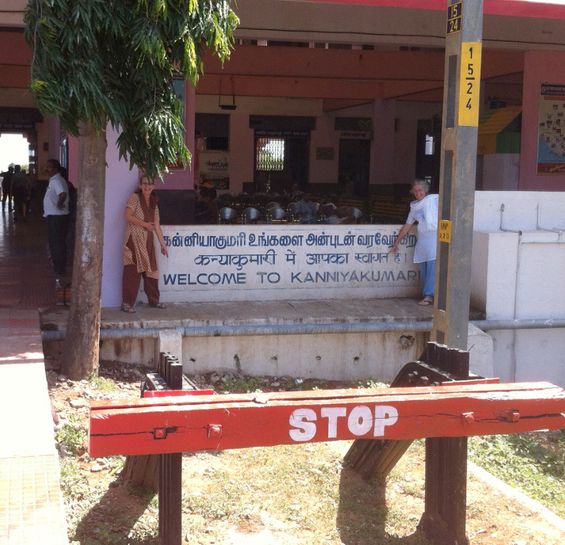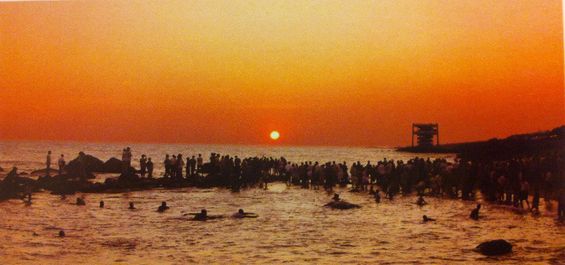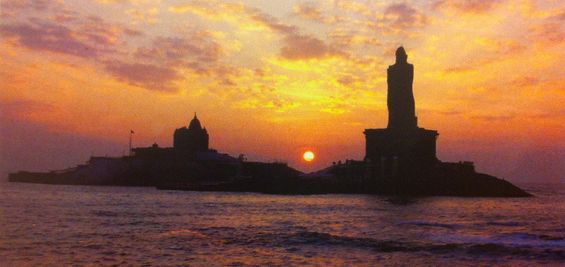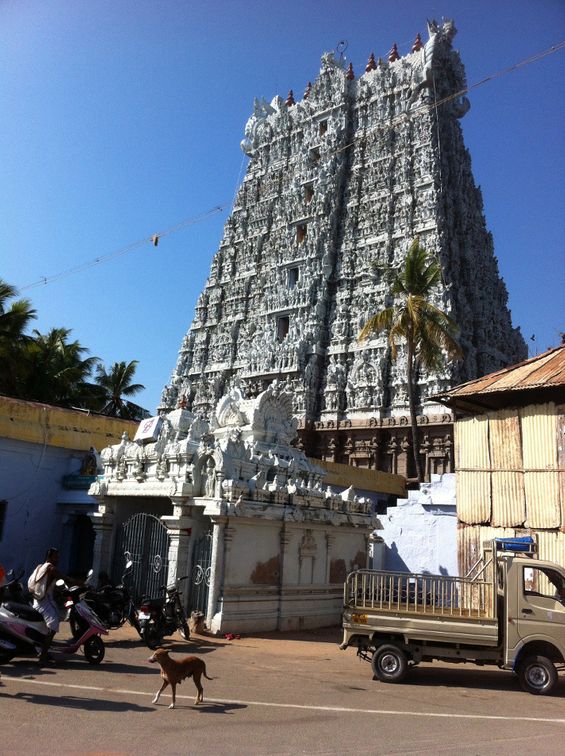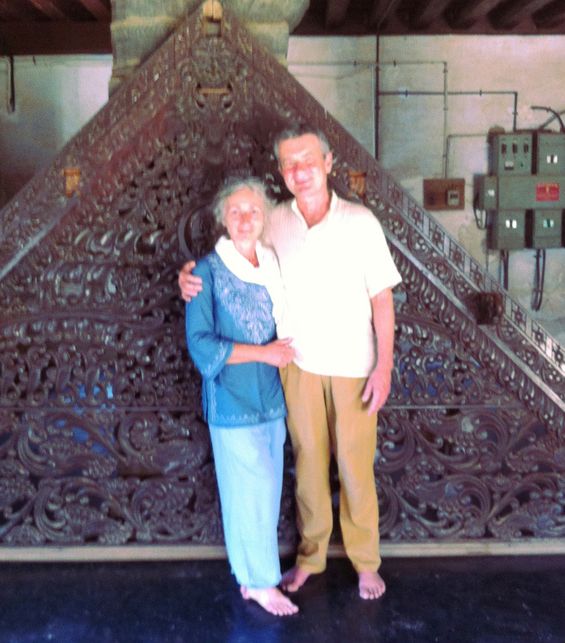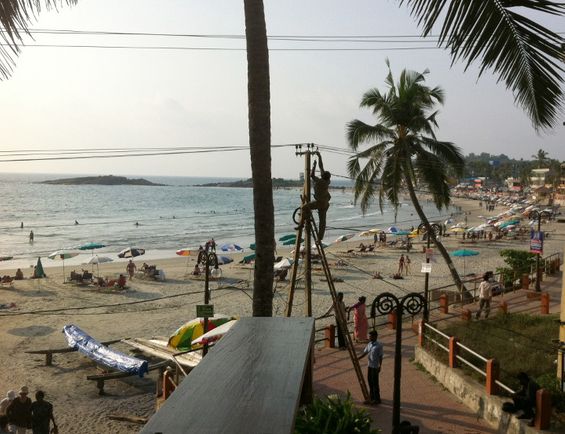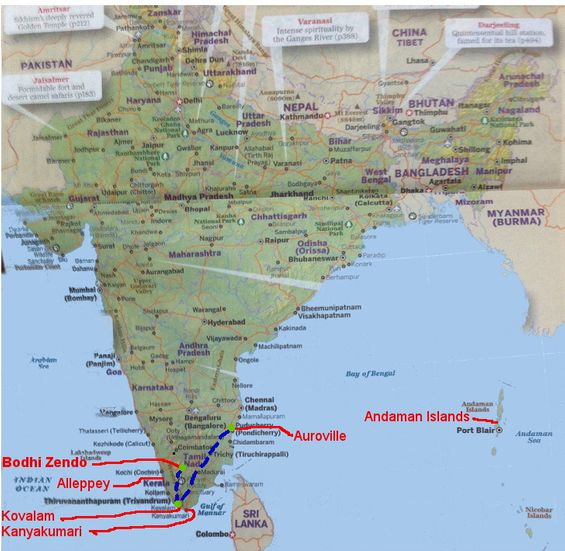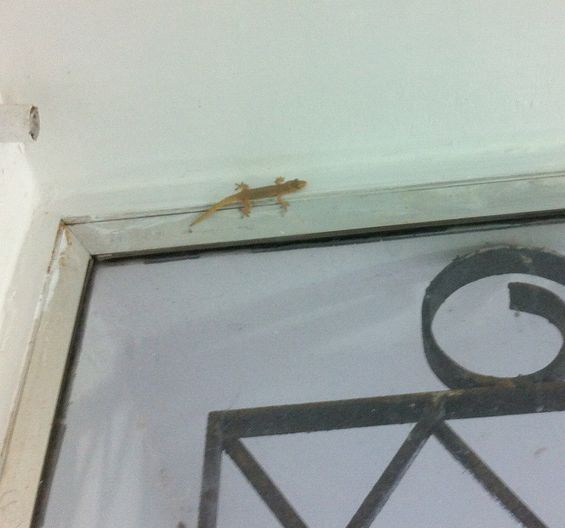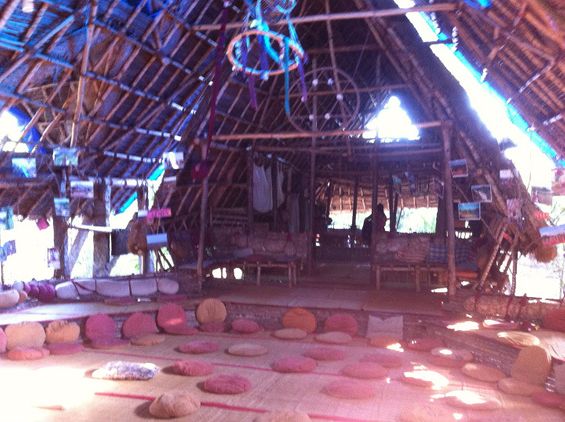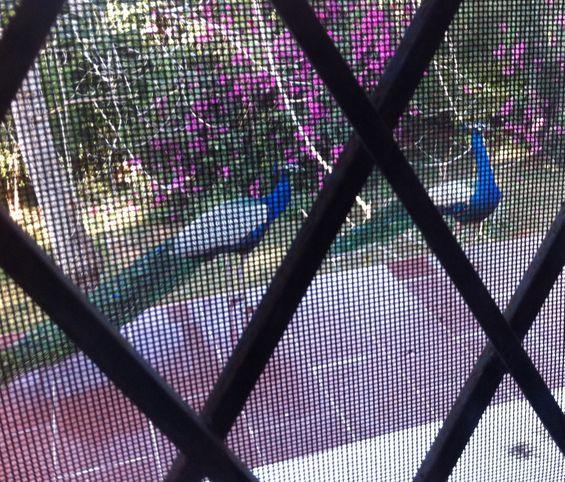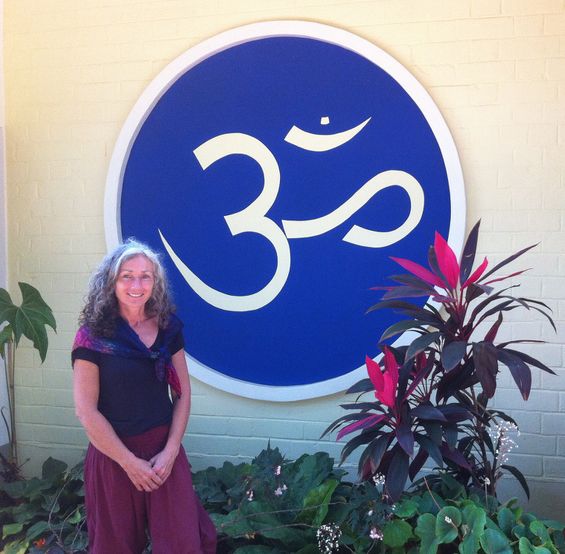Part II: India 2014
We spent Christmas and part of January in Ontario visiting with family. On January 16 we're heading out for our second major journey, to India. If you'd like to contact us, please send an email to: Roxanne@going-gypsy.com
Zen Garden 1: We arrived in India on Jan. 18, and headed to a Zen retreat centre in the mountains (Western Ghats) near Madurai in Tamal Nadu (in the south) http://www.bodhizendo.org/ That strange hump in the lower right is someone's towel hung out to dry...
Fr. Ama Samy - Zen Master. He is also a Jesuit. We attended one of his 5-day Zen meditation retreats. We also went to a truly amazing Mass that he gave.
Bodhi Zendo. John's spot was on the other side of Roxanne's.
Zen Garden 2
Random pineapple.
We moved to the west coast to a beautiful area called Kovalam - lots of beaches and palm forests. Staying at JJ's Guest House - they even provide dentistry! (There are a lot of excellent Indian dentists and doctors available, so 'medical tourism' has become a big deal - foreigners come to India for dental work or surgery they couldn't afford in their own country. JJ has a connection with a good dentist and provides the accommodations.)
We headed down to the southern tip of India to a place called Kanyakumari, where the three seas meet (Indian Ocean, Bay of Bengal and Arabian Sea). Roxanne and her buddy Karen at the train station.
There are a few small islands off land’s end at the tip of India, one of which is where the famous Hindu guru Swami Vivekananda meditated for a few days over Christmas, 1892, then decided to take his message to America (island temple on the left). The island with the giant statue is dedicated to a famous Tamil poet.
Kanyakumari is famous for it’s sunsets. Lots of people come down every day, some bathe in the ocean, and pray and chant as the sun sets.
It's also famous for its sunrises. Same activities as sunsets.
Ridin’ shotgun 1: We took a cab back towards Kovalam, making stops at a temple and an old wooden palace. Cabs are sometimes the best way to go - they cost about CD$20 per hour and will go anywhere. It's often almost as cheap and much more reliable to take a cab for any trip less than a couple of hours.
Very elaborately carved and decorated temples are everywhere. Most don't allow photography inside.
John and Roxanne goin’ native at the Padmanabhapuram Palace, “a forest’s worth of intricately carved ceilings and polished wood beams”, dating back to 1550. The floors are beautifully lacquered with a mixture of egg-shell, coconut, lemon juice and cow dung - nice and shiny!
No need to call the utility if you want a connect into the local power grid....! (he survived).
Morning on a houseboat in Alleppey, Kerala. Amber and Alex will appreciate the wisdom of the crew in not letting their Dad drive the boat...
Thought it was about time to put a map of India on the page. We started at Bodhi Zendo, then went to Kovalam (with short trips to Kanyakumari and Alleppey), then Auroville and soon the Andaman Islands.
Auroville-1: 'The City of Dawn' - Auroville is a experimental town founded in 1968. "Auroville is meant to be a universal town where men and women of all countries are able to live in peace and progressive harmony, above all creeds, all politics and all nationalities. The purpose of Auroville is to realize human unity." We dropped in to see how they're doing with that. Here's a picture of Sammy Gecko. He chirps when he wants us to go to bed and turn off the lights.
Auroville 2: We didn't have very high expectations that Auroville could have achieved anything substantial given the extraordinary aims of the place, but we've had a few surprises. As might be expected, there are still some 1960's and 1970's people hanging around, and some seem pretty loopy. The surprising bit is the younger people in their 20' and 30's who are genuinely convinced that they can make a difference, and some seem to be doing just that. One set of tree planters (this is their big communal meeting room) as their contribution to human unity chose to trap monsoon rainwater from running away and plant trees in a desert created by deforestation over the last 100 years. In the last 10 years they've raised the water table by 6 meters, and the local village people now have water in their wells again. There has been a steady stream of inventions and contributions pouring out into the neighbouring Indian villages as different groups define their 'contribution to human unity' - sophisticated but simple composting toilets, superior brick-making presses, free dental clinics, free education for local children, etc. These contributions come from the steady stream of volunteers and residents who are inspired to come live and work here for a few months to many years.
Auroville 3: Peacocks outside our bedroom window (they can fly, but make a big flapping racket as they do). The first of the four clauses of the Auroville Charter says: "Auroville belongs to nobody in particular. Auroville belongs to humanity as a whole. But to live in Auroville, one must be a willing servitor of the Divine Consciousness." There is no private property or money used here - for practical needs, they have their own internal debit-card arrangement. People who are accepted into the community are given free food at the free food store and clothing at the free clothing store, plus a small allowance on their cards for money spent inside the community (at the restaurants and cafes) and a small amount of Rupees for spending outside the community in the nearby towns. Some Aurovilians use their personal financial resources to meet all their own costs, thereby saving Auroville from paying them a maintenance. The community generates money by charging visitors (like us) to stay in the Guest Houses. Residents can contribute towards building a house (or Guest House) here with the community paying the rest, and can live in it as long as they like. If they leave, it resorts back to the community and someone else will move in. Even the hundreds of volunteers pay a small amount for housing and food (perhaps CD$5 - $10 a day, or more if they want to live in a fancier place).
In the centre of Auroville is a giant spherical meditation temple called the Matrimandir. The Inner Chamber looks like this (web photo - they don't let cameras in). In the middle of the temple ceiling is a hole with a computer-controlled mirror that directs a beam of sunlight straight down through a 70 cm diameter optically perfect glass sphere (made in Germany by Schott and polished by Zeiss). Very powerful effect ...
The bike rental place in Auroville was getting new bikes the day after we arrived, so we rented two (about CD$1/day each), and we've been putting on about 10 km a day. The yellow car with the fancy paint job in the video is a Tata Nano, the "one lakh car" (one lakh is 100,000 rupees, or about CD$2000). Sales haven't been that great - the car was marketed as "the world's cheapest car", which didn't do much for those interested in a bit of prestige. The car uses quite a bit of gas, doesn't have much power, and is expensive to repair...
Yogini Roxanne. This was her yoga place in Auroville.
This page is getting full, so please go to "India: Feb.-Mar." Thanks...
